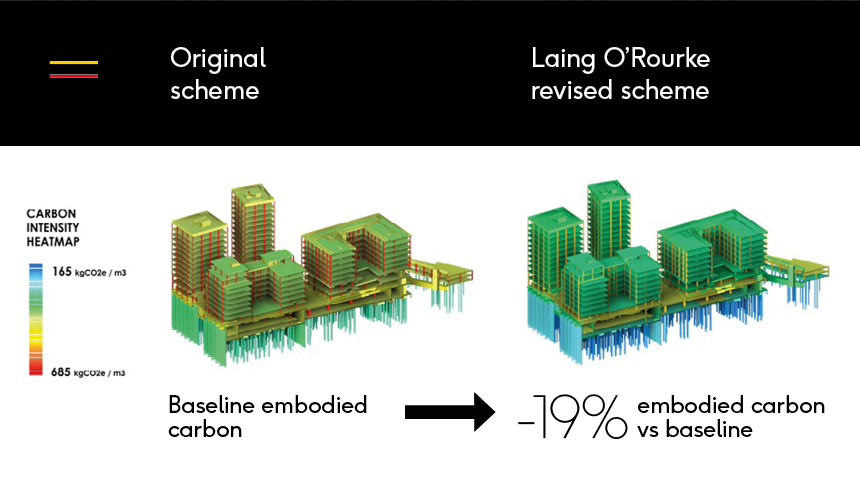Laing O’Rourke develops own calculator to reduce carbon in project designs
Laing O’Rourke has developed a new carbon calculator that can quickly analyse levels of embodied carbon using the digital model, enabling its technical team to reduce the carbon content of projects.

The digital tool which has been developed in line with the latest industry guidance focuses on the embodied carbon content of the sub- and super-structure elements, which can account for more than half of the upfront embodied carbon in a typical building project.
Since May 2021, Laing O’Rourke’s in-house technical leaders have used the new calculator on 14 bid submissions, quickly identifying changes that reduced the embodied carbon in the original designs by up to 19%.
Phase one of the carbon calculator uses an internal Laing O’Rourke app, which automates the analysis of the digital model. It extracts and indexes key information relating to a project design, such as component quantities and classification information.
Joanna Vezey, Europe technical director at Laing O’Rourke, explained how the calculator works.
“The app creates an auditable trail of all model revisions through the design phase. This brings benefits not only to carbon measurement, but also change, data validation and cost control. It does this by processing thousands of models each day across both of our operating hubs, constantly checking for new models and changes to existing ones. It currently holds several billion data points,” she said.
In phase two of the process, the app connects to a second database which houses all of Laing O’Rourke’s carbon material data.
The company’s material database has been developed using information provided from the Inventory of Carbon and Energy (ICE) database and continues to grow as the business adds Environmental Product Declaration (EPD) data from its supply chain partners.
“The final data is automatically recorded within the database and fed into a user-friendly dashboard, which we can use to assess the embodied carbon in the baseline design,” Joanna added.
“It displays the data in real time and presents a carbon heat map of a project – which clearly identifies the embodied carbon of each component and where the greatest reductions can be achieved. This has allowed our teams to present alternative options to clients to reduce embodied carbon.”
The detailed analysis is building on the benefits of Laing O’Rourke’s offsite-manufacturing capability and operating model.
Rossella Nicolin, structures technical director at Laing O’Rourke, said: “Our new carbon calculator cleverly merges data from different systems, analysing carbon content across a project and optimising our DfMA-led delivery. These learnings are now better understood and will help our Technology and Innovation team continue to make progress.”
To date, the results have been impressive and have enabled Laing O’Rourke project teams to develop carbon reduction strategies with clients, designers and supply chain partners.
Rossella added: “The construction sector faces a major challenge in finding ways to reduce scope 3 emissions. This breakthrough tool helps us start to make progress. We are looking to broaden the tool’s application to help us decarbonise other standard components of builds and apply it to facades as well as structural works.”





















